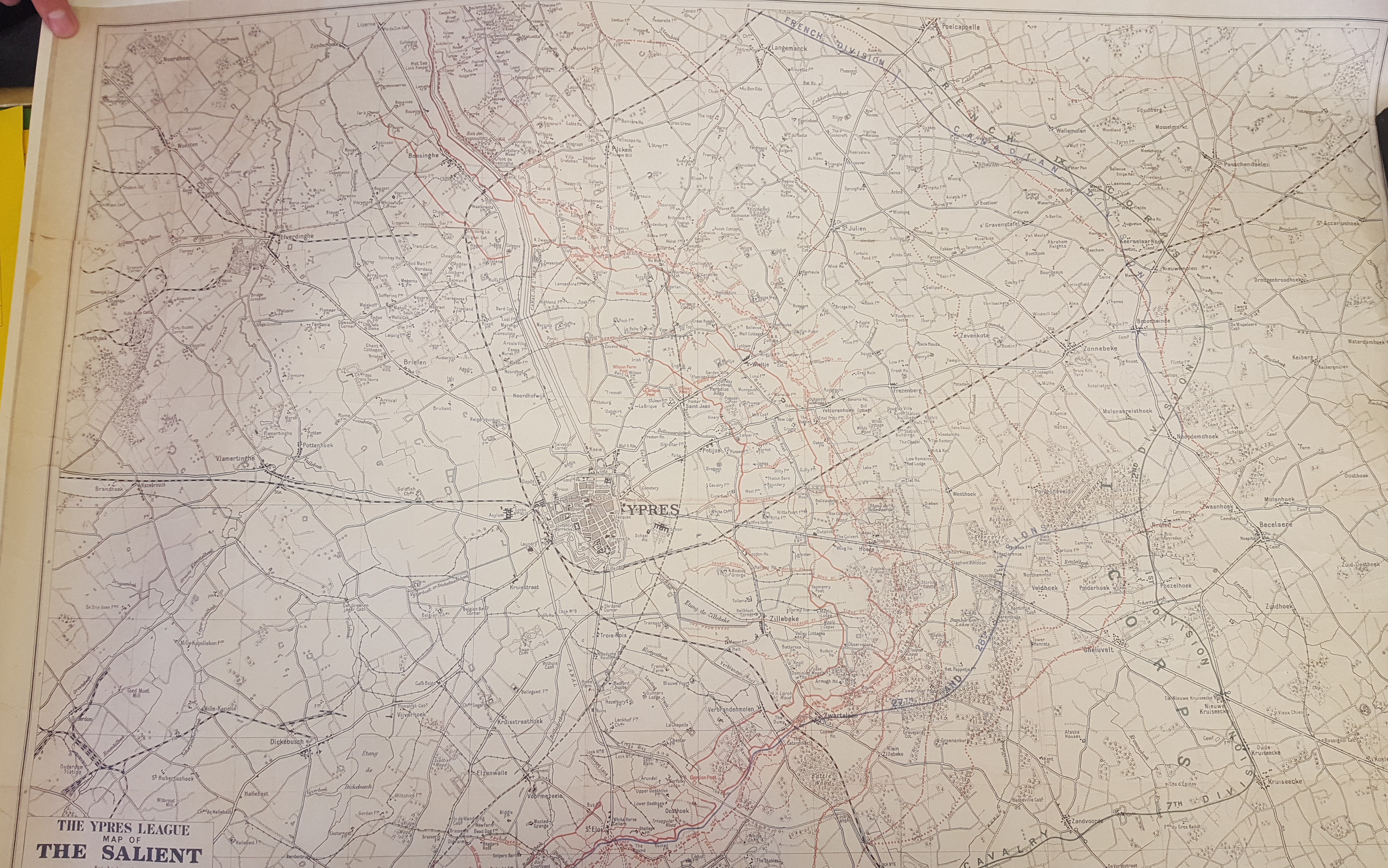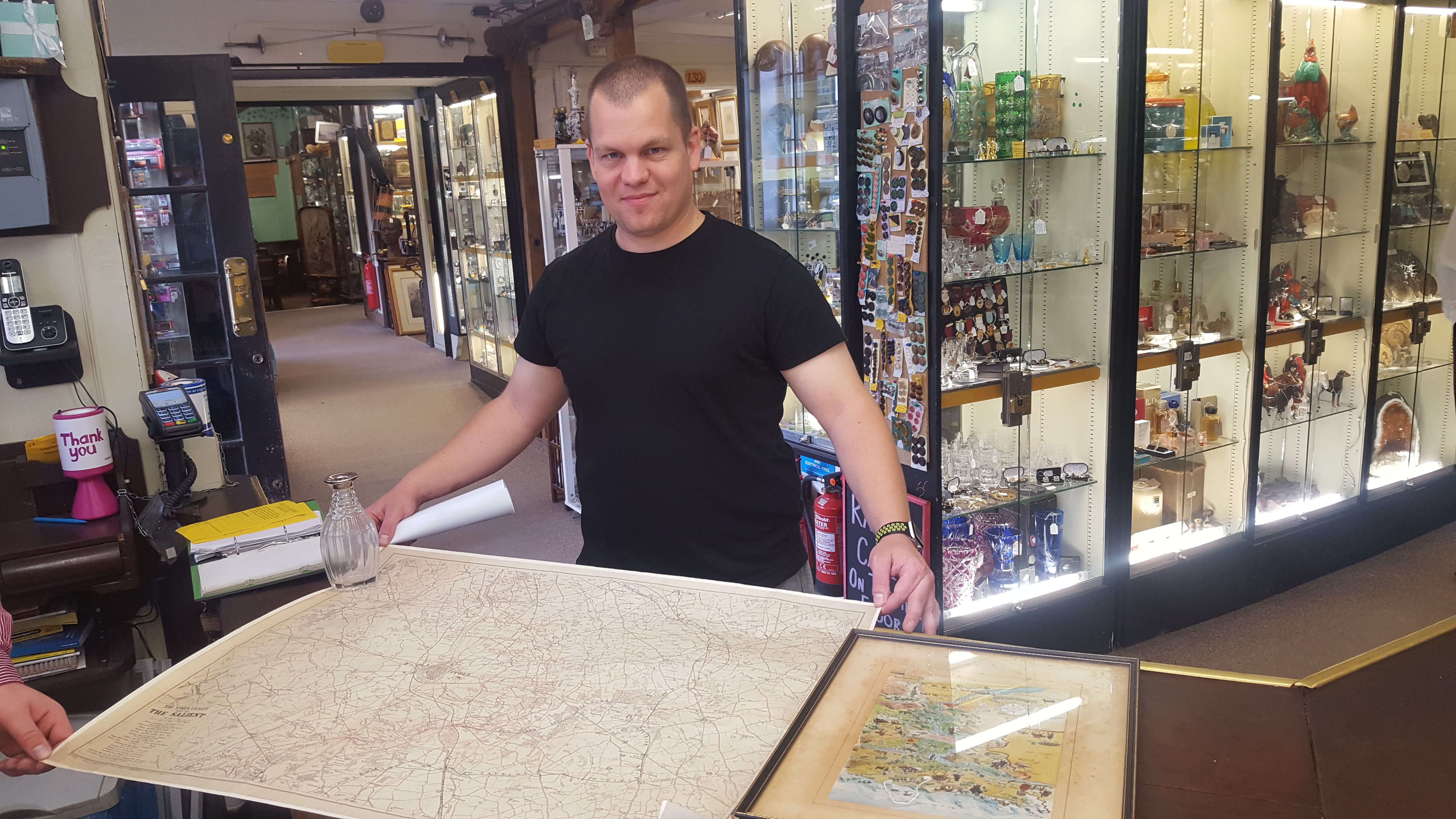Category: Uncategorized
Arts For Hungerford Local Arts Events
Arts For Hungerford is a volunteer-run community project which brings films, music, comedy, literature and a lot more to Hungerford and surrounding areas. This month two films will be showing at the Croft Hall.

On Friday it’s the 2017 Oscar-winning Iranian film, The Salesman. The future looks bright for amateur actors preparing for Death of a Salesman, until a case of mistaken identity sees a shocking and violent incident throw their lives into turmoil. It has a Rotten Tomatoes Score of 96% and Critics Consensus of ‘The Salesman takes an ambitiously complex look at thought-provoking themes, and the well-acted results prove another consistently absorbing entry in writer-director Asghar Farhadi’s distinguished filmography.’
 Then on Saturday, if you enjoy drama you won’t want to miss ‘The Time Machine’ – a new and radical interpretation of the HG Wells classic, with 5-star reviews at the Edinburgh Festival and beyond. ★★★★★ ‘Outstanding… Amazing… Magic’ (Edinburgh Southside Advertiser). Brought to us by Dyad Productions, they’ve been no strangers to the Croft Hall in recent years – Jane Eyre and The Unremarkable Death of Marilyn were both absolutely wonderful. Free tickets for under-18’s accompanied by an adult.
Then on Saturday, if you enjoy drama you won’t want to miss ‘The Time Machine’ – a new and radical interpretation of the HG Wells classic, with 5-star reviews at the Edinburgh Festival and beyond. ★★★★★ ‘Outstanding… Amazing… Magic’ (Edinburgh Southside Advertiser). Brought to us by Dyad Productions, they’ve been no strangers to the Croft Hall in recent years – Jane Eyre and The Unremarkable Death of Marilyn were both absolutely wonderful. Free tickets for under-18’s accompanied by an adult.
There is so much more to discover in the coming months thanks to Arts For Hungerford. Check out their website for more details on all upcoming events.
Hungerford Arcade “Commonwealth Day 12th March 2018”
Hungerford Arcade, owners, managers, staff and stallholders wish all our great friends in The Commonwealth a very happy day.
The Commonwealth consists of 53 Members and spans the globe.
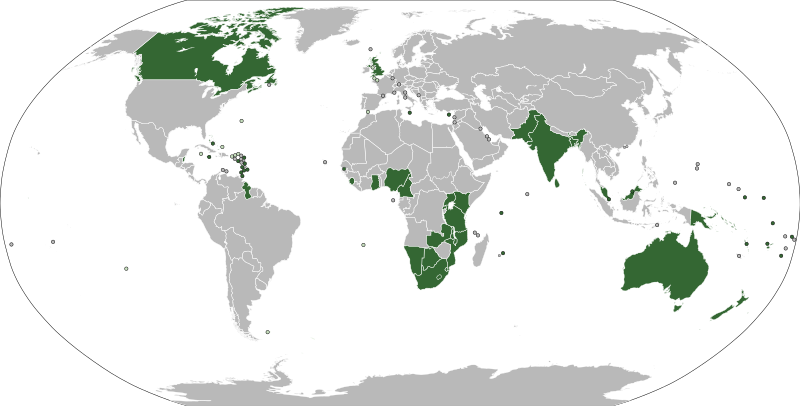 This file is licensed under the Creative Commons Attribution-Share Alike 4.0 International license
This file is licensed under the Creative Commons Attribution-Share Alike 4.0 International license
Hungerford Arcade and The Tea Cosy
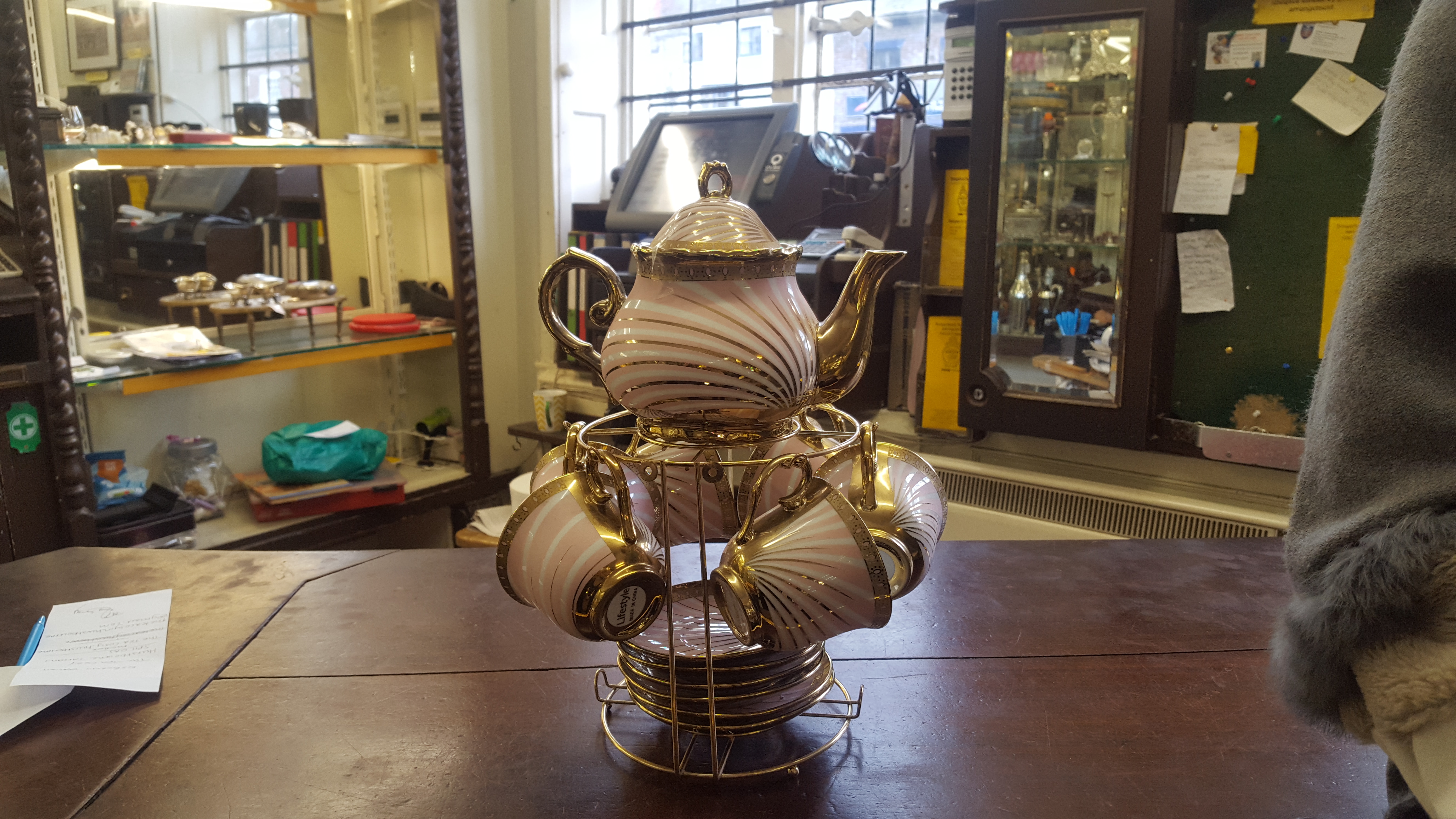
The Prosecco Tea Set!
We love making friends in other local, family run businesses – especially when those local businesses make scrumptious cakes!
This lovely couple came to visit us to find interesting things to use in their cafe, The Tea Cosy in nearby Hurstbourne Tarrant.
They bought all sorts of things, from garden ornaments, to china tea sets.
It’s not unusual to find a teapot and tea cups in a cafe – but this particular set is to be used for serving prosecco! I know, it sounds strange, but I would definitely give it a go!
They also serve more traditional tea and cakes at the Cafe with an emphasis on indulgence! I have seen some of their Facebook posts and the cakes really do look amazing! I hope we see them again soon as they were a pleasure to serve – and I might get a free cake if I’m really nice to them! Find them on Facebook here!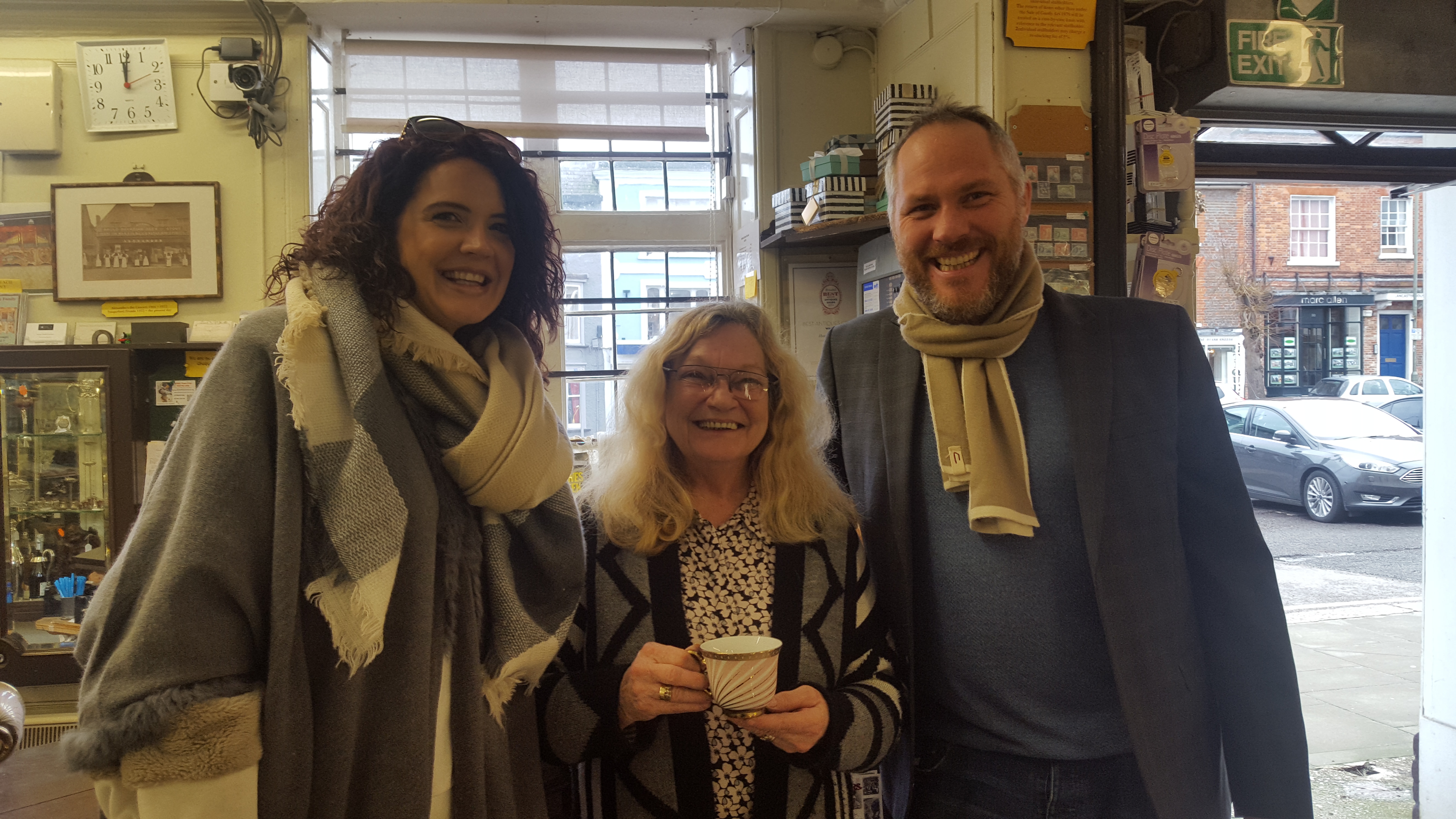
Hungerford Arcade Xīn Nián Kuài Lè!
Hungerford Arcade has many visitors from China. The co-owners, managers and stallholders wish everyone where ever they may be Xīn Nián Kuài Lè !
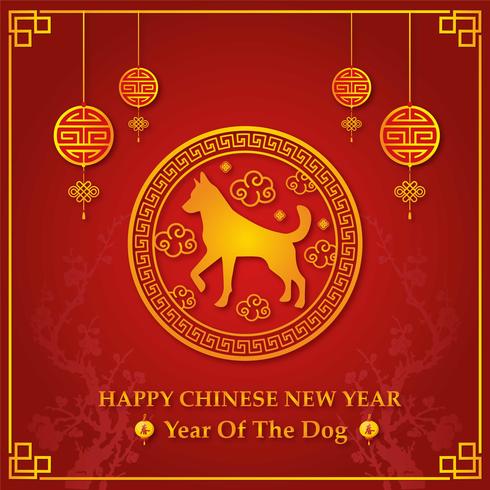
Free Vectors via Vecteezy.com
Hungerford Arcade Gift for The Corporal’s Mess

The 1st Lancashire Fusiliers in Communication Trench near The Somme 1916 Source
This year marks one hundred years since the end of the conflict that is most commonly known as World War 1. The area known as The Western Front was the main theatre of war during the years 1914-1918 and stretched from the western tip of Belgium, down through France and into Germany. It was the line of defence that kept the German army from reaching the rest of France and the English Channel. It is also the area most famous for use of “trench warfare” as a tactic by both sides.
Trench warfare came about due to advances in firepower which were not matched by advances in mobility. The entrenched defenders of an attack generally had the advantage and could inflict severe casualties on the attackers who could not properly defend as they advanced. The result of trench warfare is generally a stalemate situation where nobody advances at all.
The thing that amazes me is the complexity and scale of the network of trenches on the Western Front. I saw this in great detail when a stallholder showed me a map of the trenches around Ypres in Belgium. This was the location of one of the most infamous and costly battles of the war, the Battle of Passchendaele. The stallholder, Gordon, told me that rather than sell it he wanted to donate it to a local military base. The Corps of Royal Electrical and Mechanical Engineers (REME) are based just a few miles away at MoD Lyneham and Gordon managed to contact somebody there and offered the map as a gift to the corps.
We were visited by Lance Corporal Marshall-Saunders of the 6th Battalion REME who informed me that the map would be framed and placed on the wall in the Corporal’s mess for everybody to see. We are really glad it’s gone to such a good home.
Hopefully my picture has enough detail for you to zoom in and follow the trenches through the area and get an idea of the scale of the operation. It is really quite amazing.
Hungerford Arcade Steampunk
As you will know, Hungerford’s Christmas Extravaganza took place a few weeks ago. Every year the extravaganza attracts people from all over the place, from all sorts of backgrounds and it is not unusual to see people dressed up in full Victorian outfits, as the evening has been Victorian themed for the last 25 years.
For Mark and Dawn Easterbrook the evening was an opportunity to show off some of their finery, but for them it is not so unusual to dress like this. Mark and Dawn are more involved in the “Steampunk” scene rather than straight Victorian. 
Steampunk is a movement which incorporates elements of real Victorian history and technology with science-fiction inspired ideas and it is this the Mark and Dawn are really interested in.
Because of Hungerford Extravaganza’s Victorian roots, they decided not to go “full steampunk” on the night and instead opted for more of a traditional Victorian costume.
It’s people like Mark and Dawn who make our shop and our town so interesting and I for one would love to see them in their preferred costumes and we are looking forward to seeing them again soon, hopefully!
Hungerford Arcade – Chinese Tea Pet
Chinese tea drinking culture is thousands of years old and remains incredibly important to most people in China. From the most basic shack to the grandest house, every dwelling contains the tools required to make tea. The practice of making tea is steeped(!) in tradition and there is a lot more involved than simply throwing a tea bag in a mug and adding hot water.
One interesting tradition involves what is known as a tea pet or tea lover’s pet. I learned about this tradition when I acquired a tea pet not long ago. The tea pet usually takes the form of a small clay animal or sometimes a young boy. They are “raised” by the tea drinker who owns them by introducing tea to their unglazed form on a regular basis, thereby building up a patina, or coating, on the surface of the clay.

Tea preparation with Buddha tea pet in foreground
The clay used must be a specific type from a specific region. Yixing clay is
found in Jiangsu province and comes in three colours – purple, green and red. You may have heard of Yixing teapots which must be treated in the same way as tea pets, every time you fill the pot it will absorb some tea and by pouring tea over the body of the pot you can build up a coating on the surface and this retains the colour and flavour of the tea. A dedicated tea drinker will only steep one kind of tea in a particular teapot so as to avoid tainting the flavour already achieved through absorption. And you thought you were picky because you don’t like Typhoo!
Some tea pets, mine included, have a hole through which to fill them, but also a tiny hole elsewhere through which water can escape. When filled with cold water and then hot water is poured onto the outside, if the water is hot enough to make tea, the difference in temperature will cause the cold water to squirt out from the tiny hole. One of the most popular designs is called Pee Pee Boy and, you guessed it, the tiny hole makes it looks like the little boy is having a wee. Charming!

My own tea pet in the form of a sacred bat or fu
My tea pet is in the form of a bat which in Chinese culture symbolises good
luck. The Chinese word for Bat (fu蝠) sounds identical to the word for good fortune (fu福) so it makes sense that it has come to mean the same thing. It is made from green Yixing clay and is not very old but is still very beautifully formed. Having never heard of tea pets before a few weeks ago, I am now very interested in the history and tradition surrounding them and hope to find a few more, hopefully older ones in the future.
Alex
Hungerford Arcade “Toru Dutt”
When passing the Town Hall, I often glance at our visitors resting for a while as they explore the beauties of our small town. Sometimes they (especially if I am waiting for a bus) strike up a conversation with me and I have met people from as far away as Burma and the USA.
The other day, I was planning to go to Marlborough and onwards to Salisbury but as normal, I had cut it fine and was rushing for my bus. It was as I was passing the town hall that I noticed a middle-aged man reading a book by the Indian poet Toru Dutt (1856-1877). I would have liked to have stopped and asked him if he had purchased the book at the Arcade as the edition was not that modern. Alas, the blue Marlborough bus was behind me and I was unable to stop and chat.
I first came across Toru Dutt when I was studying Rabindranath Tagore at college and what impressed me about her was the amount and the quality of the work that she had managed to produce during her short life. But what of Toru and why have I chosen her as the subject of this short article? Well she was one of these people who died young and managed to leave us a considerable legacy. John Keats and Aubrey Beardsley also spring to mind but whereas they are very well known, Toru Dutt outside of India has been somewhat forgotten.
Born in 1856, Toru’s family converted to Christianity in 1862 and by 1871 Toru was at Cambridge and immersing herself in her French Studies.
It was here that she met Mary Martin the daughter of the Reverend John Martin of Sidney Sussex College. This was a natural and lasting friendship that continued even after Toru’s return to India.
My researches indicate that a number of their mutual letters have survived as well, as a number of Toru’s letters to her cousins which were written whilst she was in England (1871-73).
It is interesting to note that the French poets Rimbaud and Verlaine were in England at roughly the same time but the contrast between Toru and the dissolute poets could not be greater.
Toru had a natural aptitude for languages and was fluent in both English and French as well as Bengali (she later became proficient in Sanskrit).
During her short time with us, Toru wrote two novels Bianca or The Young Spanish Maiden (written in English although unfinished) and Le Journal de Mademoiselle d’Arvers which was written in French. I have never read either of these works so I cannot pass comment on them but I have read some of her translations and poetry.
In 1876 she published A Sheaf Gleaned in French Fields which was a volume of French poems that she translated into English with her elder sister Aru. Her Sanskrit translations Ancient Ballads and Legends of Hindustan which were published five years after her death, attracted the attention of Edmund Gosse who reviewed her work very favourably in the Examiner.
Gosse noted that Toru brought with her from Europe a store of knowledge that would have sufficed to make an English or French girl seem learned, but which in her case was simply miraculous. I cannot say that I have read everything that she wrote, but I have had the pleasure of reading Our Casuarina Tree (published in 1881). Although not well known in the UK, it remains very popular in Indian literature. In short, Toru celebrates the tree of the title and remembers her childhood days spent beneath it with her beloved family. The poem is autobiographical and was written when she was abroad and one can sense that she is pining for her homeland and searching for her recent childhood.
Toru lost her brother Abju in 1865 and her beloved sister Aru in 1874 and I will quote a few lines of the poem which will give you a flavour of the work.
Therefore I fain would consecrate a lay
Unto my honour, Tree beloved of those
Who now in blessed sleep, for aye repose
Dearer than life to me, alas! were they!
May’st thou be numbered when my days are done
With deathless trees – like those in Borrowdale
The reference to Borrowdale is interesting as this is the valley near Keswick in the Lake District which Wordsworth mentions in his work Yew-Trees (1803). It is interesting to see the genesis of Toru’s poem and how the theme was suggested to her.
When one thinks that Toru was just twenty-one when she died on the 30th of August 1877 (I believe she was a victim of TB) it is astonishing how much this young lady actually achieved. Toru was like Mozart and others and was one of these people who even at a young age displayed talents well beyond their tender years.
Like Mozart, she died young and it is interesting to think that if these talented people had lived into old age what they would have achieved.
We will never know the answer to that question but it is interesting nonetheless.
Although books of her poetry are a little scarce there is plenty to find out about her on the internet. I would like to have thought that my mystery man had rummaged through the books in the book section in the Arcade and had found a volume of Toru’s work.
In ten years I have rarely found books on Indian poetry let alone anything on Toru Dutt but this chap might have been lucky and found a book.
Like all things, I will most likely come across her work when I am not looking for it but that is life.
If, however you do come across a book of her work then consider yourself privileged as she was a talent that only shone for a very short period and left the world a poorer place when she died.
Happy Hunting
Stuart Miller-Osborne
Hungerford Arcade Waitrose Coffee Tin
Regular customer Kim was so pleased to find this old coffee tin for a very particular reason.
Not only does she collect antiques and restores furniture, this tin was a slightly more personal item to her.
The tin is from Waitrose and when it was purchased new and full of aromatic french coffee, Waitrose only had about 10 stores and they were all in the south of England.
Kim has worked at Waitrose now for a number of years and couldn’t resist this link to the past when she saw it in The Junk Shop.
Keep hunting for these items of social interest as it is not just monetary value that makes something special.



